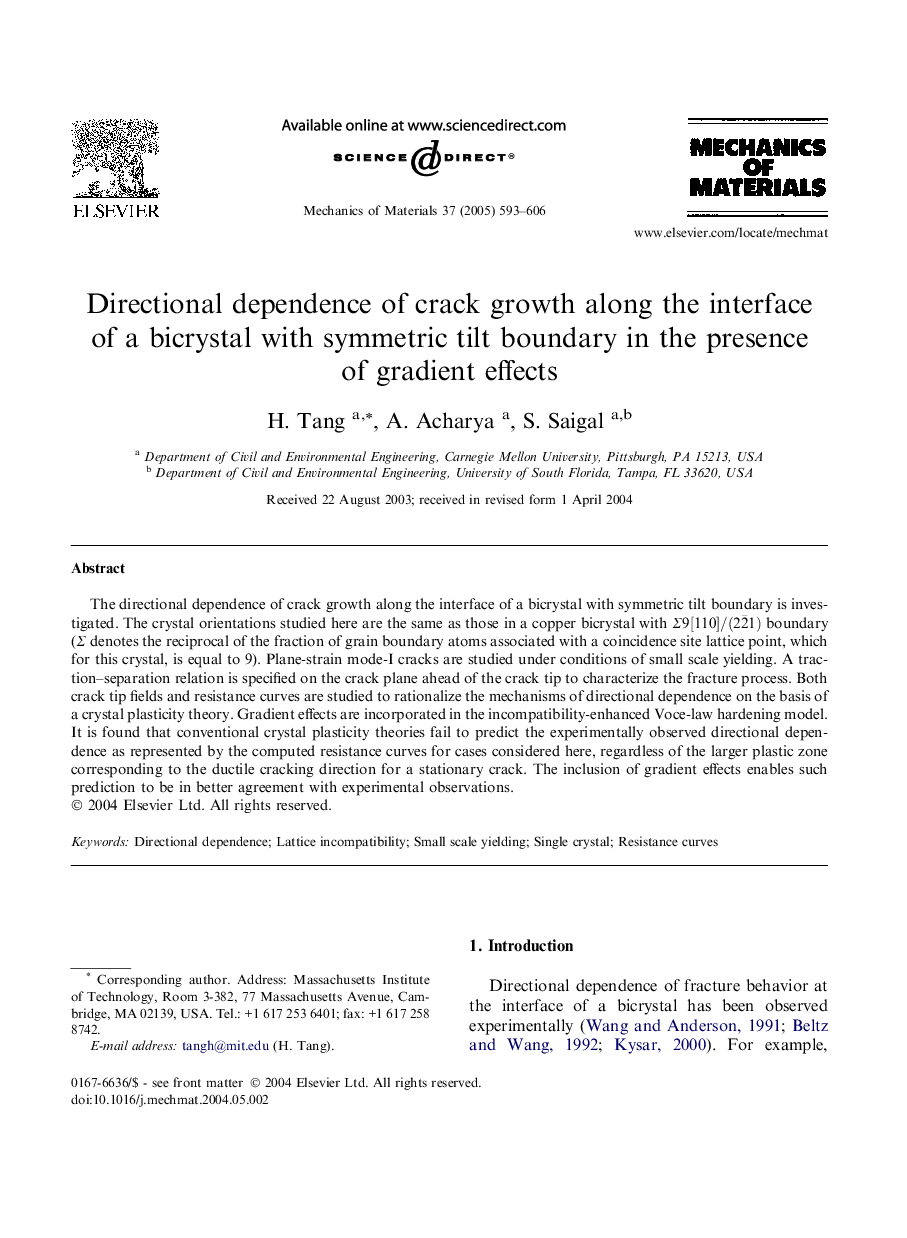| Article ID | Journal | Published Year | Pages | File Type |
|---|---|---|---|---|
| 9711649 | Mechanics of Materials | 2005 | 14 Pages |
Abstract
The directional dependence of crack growth along the interface of a bicrystal with symmetric tilt boundary is investigated. The crystal orientations studied here are the same as those in a copper bicrystal with Σ9[110]/(22¯1) boundary (Σ denotes the reciprocal of the fraction of grain boundary atoms associated with a coincidence site lattice point, which for this crystal, is equal to 9). Plane-strain mode-I cracks are studied under conditions of small scale yielding. A traction-separation relation is specified on the crack plane ahead of the crack tip to characterize the fracture process. Both crack tip fields and resistance curves are studied to rationalize the mechanisms of directional dependence on the basis of a crystal plasticity theory. Gradient effects are incorporated in the incompatibility-enhanced Voce-law hardening model. It is found that conventional crystal plasticity theories fail to predict the experimentally observed directional dependence as represented by the computed resistance curves for cases considered here, regardless of the larger plastic zone corresponding to the ductile cracking direction for a stationary crack. The inclusion of gradient effects enables such prediction to be in better agreement with experimental observations.
Related Topics
Physical Sciences and Engineering
Engineering
Mechanical Engineering
Authors
H. Tang, A. Acharya, S. Saigal,
